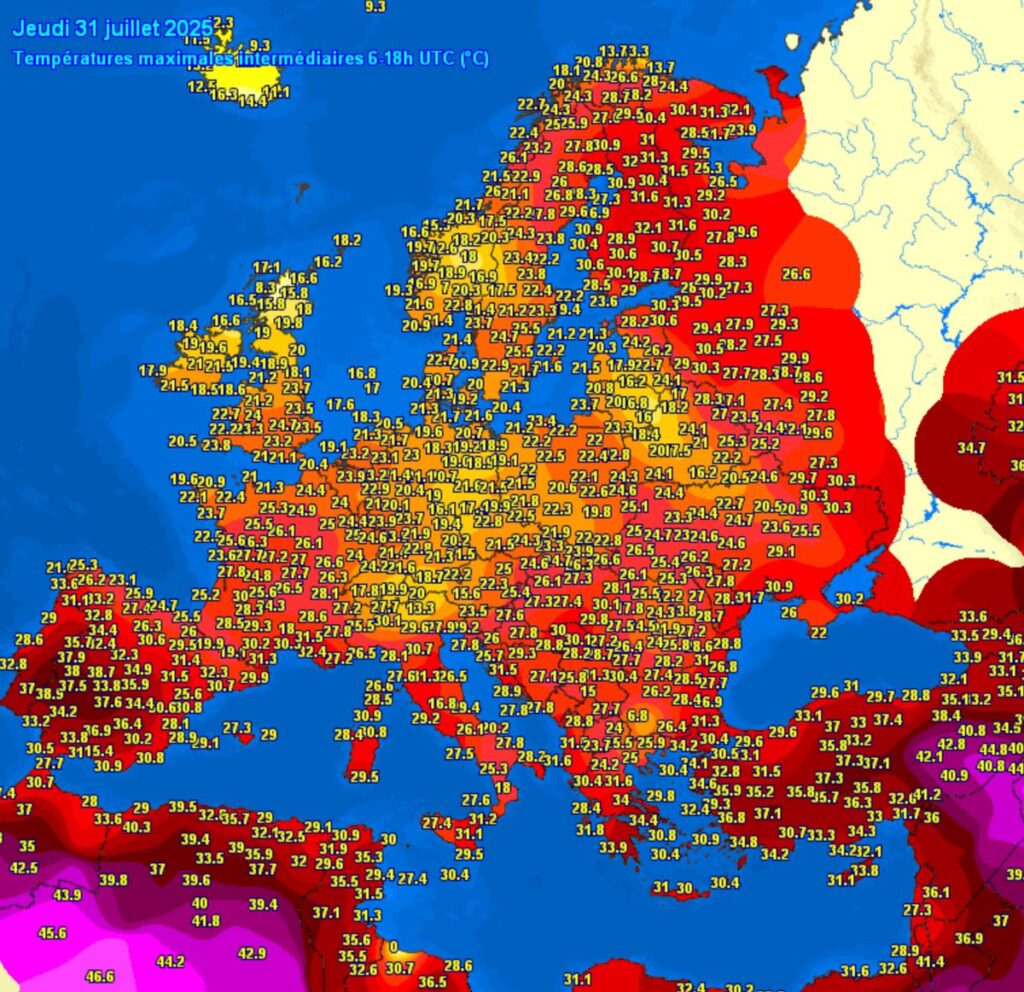An unrelenting and historic period of heat in Finland finally started to fade on Sunday 3 August with the highest temperature of the day recorded in Sodankylä at 28.5°C
As reported previously by this website, Finland has been in the grip of a quite remarkable period of heat which has been seen across the Scandanavian countries as a whole. The heat wave, described as the longest and most intense since records began in 1961, broke the previous record of 13 consecutive days set in 1972. The streak began in mid-July and peaked with temperatures reaching as high as 32.4°C in Kaskinen on 14 July and 31.7°C in Ähtäri. Key locations like Parikkala, Mikkeli, and Joensuu consistently recorded highs above 30°C, with southeast Finland and parts of North Ostrobothnia being the hottest regions.
Lapland also saw a separate record with 17 consecutive days above 25°C, the threshold for a heatwave, with temperatures hitting 26.2°C in Ylitornio and 25.6°C in Rovaniemi.

By Wednesday 6 August all parts of the country are expected to experience typical Finnish summer temperatures, ranging around 20°C. Daily highs are unlikely to reach 30°C again during the current week. After being under a persistent high-pressure system, a low-pressure system has brought cooler air, showers, and thunderstorms, starting in western Finland on 2 August and spreading nationwide by 3 August.
Mika Rantanen from the Finnish Meteorological Institute highlighted the “truly unprecedented” nature of the heatwave, noting its significant duration in relation to the previous record. Further analysis will likely to be forthcoming in relation to the level of attribution that can be given to climate change for this historic event.
The prolonged heat has led to increased public use of beaches, lakes, and rivers. Urban centres have reported elevated demand for cooling and hydration services, particularly among older populations.
Hospitals and health centres issued recommendations for vulnerable groups to stay hydrated and avoid prolonged exposure during the hottest parts of the day. Water utilities and energy providers have noted higher consumption levels, particularly in southern cities where night-time temperatures have remained above 20 degrees for extended periods.
The prolonged heatwave has significantly affected agriculture and forestry. Farmers across multiple regions have reported drought and lower crop yields. Forestry officials have issued fire risk warnings, particularly in inland areas with minimal rainfall.
In Lapland, the extended heat has caused notable challenges. Local authorities have set up temporary cooling centres in public buildings and provided safety guidance for residents.
The Helsinki Times, reported at the end of July, that only a quarter of the country’s installed wind energy capacity was in use for most of the month. The grid operator Fingrid indicated that very calm conditions combined with sustained high temperatures led to a widespread standstill in turbine activity, particularly during daylight hours.